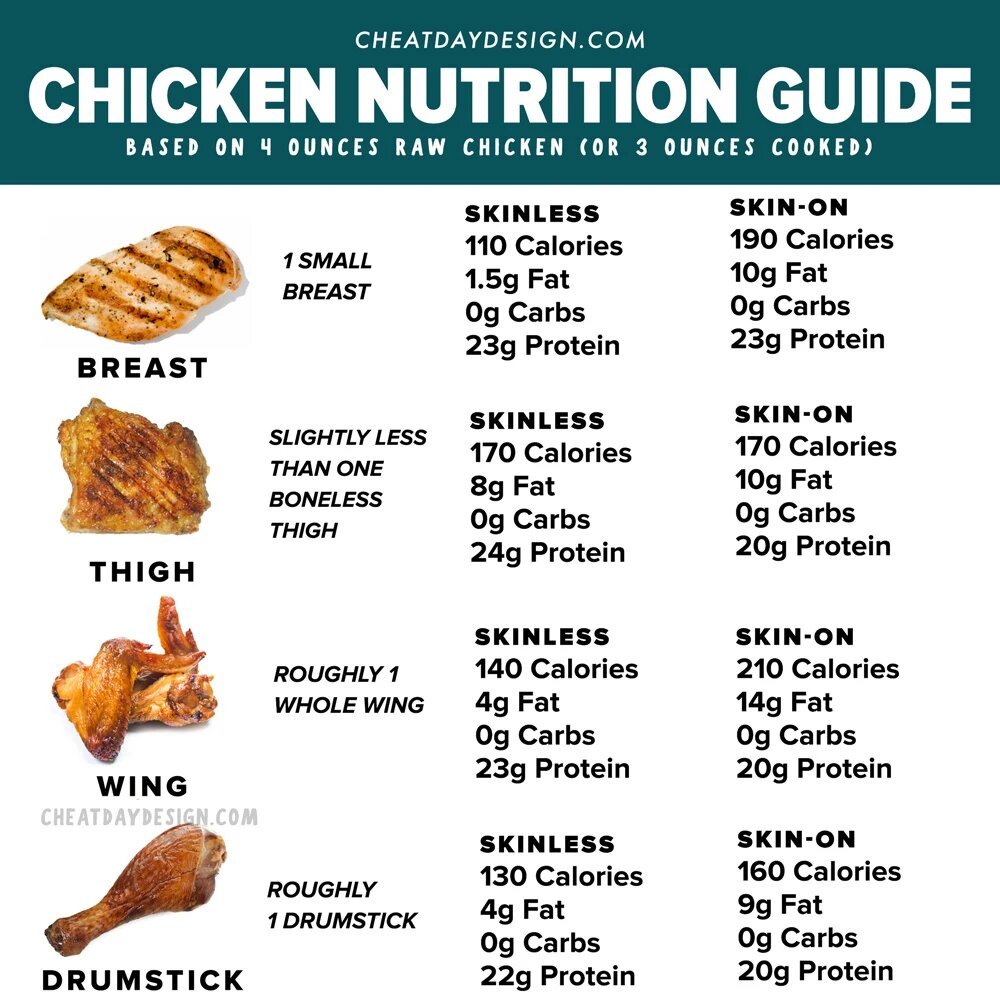
Have you ever savored the mouthwatering delight of a succulent chicken leg at Mr. Pollo Restaurant and wondered about the secrets it holds within? Today, we embark on a culinary journey to uncover the mysteries of Calories in a Chicken Leg.
The number of calories in a chicken leg depends on various factors such as the size of the chicken leg and whether it is cooked with or without skin. Here are some examples of the number of calories in a chicken leg:
As you can see, the number of calories in a chicken leg varies depending on whether it is cooked with or without skin and its size.

Chicken legs are a good source of protein, which is essential for building and repairing muscles. However, they are also high in calories and fat, especially if they are cooked with skin. Here is the breakdown of the number of calories and macronutrients in a chicken leg with skin:
As you can see, chicken legs are high in fat, which can contribute to weight gain if consumed in excess. Therefore, if you're watching your calorie intake, it's best to opt for chicken legs without skin.
View more: Is Eating Chicken Every Day Healthy
Apart from being a good source of protein, chicken legs are also rich in other nutrients. Here is the nutritional information of a chicken leg with skin:

Vitamin B6 and niacin help your body convert food into energy, while vitamin B12 plays a crucial role in maintaining a healthy nervous system. Phosphorus is important for strong bones, and selenium is an antioxidant that helps protect cells against damage.
Here's how the number of calories in a chicken leg compares to other foods:
As you can see, chicken legs with skin are higher in calories than many other foods. Therefore, it's important to consume them in moderation if you're trying to lose weight.
Grilling chicken legs without skin is a healthier alternative to frying or roasting them. In general, grilled chicken legs without skin have fewer calories than fried or roasted chicken legs with skin. Here is the breakdown of the number of calories and macronutrients in a grilled chicken leg without skin:

As you can see, grilled chicken legs without skin are a great source of protein and contain less fat and fewer calories than chicken legs cooked with skin.
View more: How Long to Fry Chicken on the Grill
Chicken breasts are a leaner source of protein and contain fewer calories and less fat than chicken legs. However, chicken legs are a good source of nutrients such as selenium, vitamin B6, and niacin.
You can reduce the number of calories in a chicken leg by removing the skin before cooking it. You can also grill or bake chicken legs instead of frying or roasting them.
Yes, you can eat chicken legs if you're on a diet, but you should consume them in moderation and opt for chicken legs without skin and cooked in a healthier way, such as grilling or baking.

The number of chicken legs you can eat in a day depends on your calorie needs and overall diet. As a general guideline, it's recommended to consume 1-3 servings of protein per day, with each serving being around 3-4 ounces.
In conclusion, the humble chicken leg, a staple at Mr Pollo Restaurant and dinner tables worldwide is not just a gastronomic delight but also a subject of intrigue for those counting their calories. Understanding the Calories in a Chicken Leg not only helps you make informed dietary choices but also allows you to savor this culinary favorite guilt-free. So, the next time you indulge in a delicious chicken leg, you can relish it not just for its taste but also for the knowledge of what it brings to your plate.